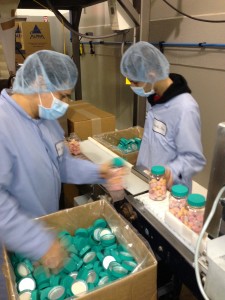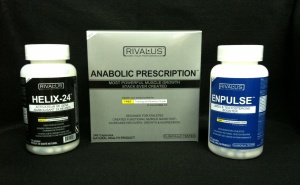 Outsiders don’t immediately recognize the amount of thought that goes into each consumer package. Within the industry and with CPG companies, however, each packaging decision is carefully considered. The size, shape, composition, and target market of a retail item, for instance, guides the best approach bringing it to store shelves. But for manufacturers and their contract packaging partners, safe conveyance and consumer-appeal are far from the only issues at hand.
Outsiders don’t immediately recognize the amount of thought that goes into each consumer package. Within the industry and with CPG companies, however, each packaging decision is carefully considered. The size, shape, composition, and target market of a retail item, for instance, guides the best approach bringing it to store shelves. But for manufacturers and their contract packaging partners, safe conveyance and consumer-appeal are far from the only issues at hand.
In addition to grabbing consumers’ attention and meeting client expectations, packagers are also responsible to regulations governing materials and practices. In order to meet expectations, established packaging companies become adept at identifying trends – both within the trade and among external sources.
Recognizing industry shifts and consumer trends gives packagers valuable information, guiding innovation in the right direction. The following examples represent a few developments and tendencies impacting today’s co-packaging industry.
Nutraceutical Packagers Play-On in the Face of Changing Regulations
 Safe packaging is not an area of compromise – especially in food and drug industries, where public safety is in the hands of packagers.
Safe packaging is not an area of compromise – especially in food and drug industries, where public safety is in the hands of packagers.
In the interest of protecting consumers, contract packaging companies work with regulators, ensuring dietary supplement products are handled properly, at each stage of fulfillment.
Recent changes to packaging standards in the pharmaceutical sector have contractors scrambling to cover all the bases.
The new laws pose questions in the following areas, among others:
- Global Distribution
- Product Development
- Adaptability
- Infrastructure
- Scalability
- Timing
In short, packagers are wondering if they have the infrastructure in place, with sufficient adaptability to meet new standards. And can it be done on time and profitably scaled? For many, the answers are yet unknown, but a recent survey indicates an industry-wide commitment to compliance.
Despite the extra work brought-on by regulatory changes, nearly half of participants in the PMP News 2015 Market Segment Study were eyeing increased capacity and better profitability as important reasons to invest in their packaging facilities.
The new regulations were also identified as a major influence on decision-making, keeping companies very busy integrating the new standards into daily operations. Due to the increased workload and future uncertainty, packagers are finding fewer ways to innovate, focusing instead on compliance. As the transition unfolds, however, analysts see opportunities at hand for creative contract packagers, willing to embrace consumer-driven development and innovation.
Distribution Trends Shape Packaging Developments
The increasingly global nature of CPG markets continues to influence how packagers do business. As markets open outside US borders, for instance, contractors seek partnerships in developing regions. Early-on, the strategy helps packagers enter new markets, without major infrastructure investments. Domestic packagers are trending toward similar distribution improvements, striving to work as close as possible to their target markets. The benefits are threefold:
- Packaging near end-users reduces transportation costs.
- Completing packaging jobs in particular regions gives packagers a competitive advantage, enabling them to better serve members of their target markets.
- Closely positioned distribution networks reduce the need for high inventory levels, facilitating rapid replenishment and timely turnaround.
By tightening-up distribution channels, packaging companies reduce the time needed to fill orders and ship them to retailers. As a result, more and more CPG companies are making connections with locally established packaging contractors.
Digital Possibilities Open Doors for Cutting-Edge Companies
Digital printing offers expanded options for producers striving to differentiate their brands. The economical printing alternative affords greater personalization and helps strengthen consumer relationships. Locally inspired messages, for example, create label decoration customers identify with, though the product is the same nationwide. These personal, even emotional pleas serve to set-apart brands willing to direct marketing toward individual customers.
Digital printing installations are growing, showing a commitment toward the versatile technology. It is not always an either/or scenario for packaging companies considering digital options. With run sizes decreasing by an average of 7-9% annually, however, digital alternatives furnish greater efficiency – even for companies that plan to continue using their analog systems.
It has been forecast digital printing operations will eclipse standard analog systems, in number, by 2018.
Consumers Respond to Clean Packaging
Design trends ebb and flow, like fashion statements falling in and out of favor. Where colorful, splashy designs once garnered positive attention; simplistic, clean packages are now preferred by many shoppers. The movement toward minimalism translates across several consumer sectors, including food, which is under greater scrutiny, than ever before. Just as shoppers gravitate to clean eating and transparency within the food supply chain, they also respond well to stark, honest packaging designs.
See-through packaging is catching-on too, giving visual access to discerning shoppers. Just as they want to know more about materials, manufacturing practices and labor policies, modern consumers demand the highest level of transparency at the point of sale.
Beverage Packaging Trends Highlight Diverse Demand
Several emerging trends within the beverage industry underscore consumers’ demand for choices. The number of units in a package, for example, appears to be in-play as producers experiment with different counts. The bottled six-pack and standard 12-pack of cans are no longer the only options for shoppers, who now see various pack sizes – depending upon the sales outlets chosen for distribution.
As they try non-traditional pack sizes, beverage companies are also finding success marketing downsized versions of their regular products. 7-8 oz. beverage portions, for instance, help soft-drink makers market to a wider cross-section of soda drinkers. Sample packs are another way beverage producers are extending more choices, without rolling-out new brands. A boutique producer, for instance, can represent several of its most popular flavors in shelf-ready packaging.
In order to meet demand, without compromising quality, safety, and consumer expectations; packaging companies apply high standards to CPG projects. Evolving consumer trends and progressive packagers’ commitment to innovation are continually at play, influencing packaging choices. These are only a few developments driving modern packaging outcomes.
